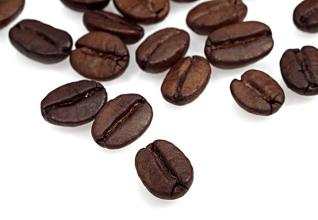Coffee bean red wine treatment method flavor description characteristics processing and growth process
Coffee bean red wine treatment method flavor description characteristics processing and growth process
Next, let's talk about the specific process of fermentation. First of all, Colombian farmers carefully pick coffee cherries and carefully select coffee red fruits to ensure that among the coffee cherries selected for processing, the percentage of immature cherries is less than 2%, defective beans less than 3%, and floating beans less than 5%.
The selected coffee cherries are placed in a specific container by the farmer's uncle, which should have a device similar to a red wine fermentation suppository or a single exhaust valve. In this way, carbon dioxide can be spilled through the device to control the concentration of air in the container. At this time, the coffee cherries in the container are fermented with acetic acid, and the beans are relatively bright, clean and citric acid.
In general, the processor injects carbon dioxide into the container to prevent oxidation from producing volatile acid. this process is called lactic acid fermentation, which produces malic acid and stone acid, which is relatively stable, so the beans fermented by lactic acid are more sour, with cheese, nutty and creamy flavor.
Do you feel surprised by this process? have you ever tasted the coffee made by this method?
The red wine treatment of coffee beans, also known as red wine treatment, is inspired by the brewing technology of red wine. At present, only eight estates in Colombia have successfully introduced coffee beans treated with this method to the market. According to the data of these eight estates, we can roughly divide the types of red wine treatment into: acetic acid fermentation (Aerobic aerobic fermentation), lactic acid fermentation (Anaerobuic anaerobic fermentation), mixed fermentation (Mix).

Important Notice :
前街咖啡 FrontStreet Coffee has moved to new addredd:
FrontStreet Coffee Address: 315,Donghua East Road,GuangZhou
Tel:020 38364473
- Prev

Flavor description of exocarp and endocarp of coffee bean the degree of grinding in the producing area of the variety
Description of the flavor of exocarp and endocarp of coffee beans the beans produced by grinding degree and sun-drying have complete natural mellow taste and better viscosity, but the acidity is lower and the flavor is more changeable. Mellow taste is an important condition of espresso, which produces a mellow and smooth feeling as strong as wine, and lovers of espresso can increase the weight of sun-dried beans. Yemeni mocha,
- Next

Red Cherry Project Sidamo Coffee Bean Flavor description of taste variety producing area
Red Cherry Project Sidamo Coffee Bean Flavor description of the taste variety producing area in order to better let you know about the red cherry project, I have also done some homework to share with you. Operation Cherrie Red's Red Cherry Project (ORC) is a project to improve the quality of small-scale farms, mainly to encourage soybean farmers and surprise roasters, Trabocca, the largest coffee bean manufacturer in the Netherlands.
Related
- Guji coffee producing area of Guji, Ethiopia: Humbela, Shakiso, Wulaga
- What is the most expensive variety of Qiloso in BOP multi-variety group?
- How to store the coffee beans bought home?
- Why are Yemeni coffee beans so rare now?
- Ethiopian Sidamo all Red Fruit Sun Sun Santa Vini Coffee beans
- SOE is mostly sour? What does it mean? Is it a single bean? what's the difference between it and Italian blending?
- Is Italian coffee beans suitable for making hand-brewed coffee?
- How to choose coffee beans when making cold coffee? What kind of coffee beans are suitable for making cold coffee?
- Just entered the pit to make coffee, what kind of coffee beans should be chosen?
- Can only Japan buy real Blue Mountain Coffee? What are authentic Jamaican Blue Mountain coffee beans?

